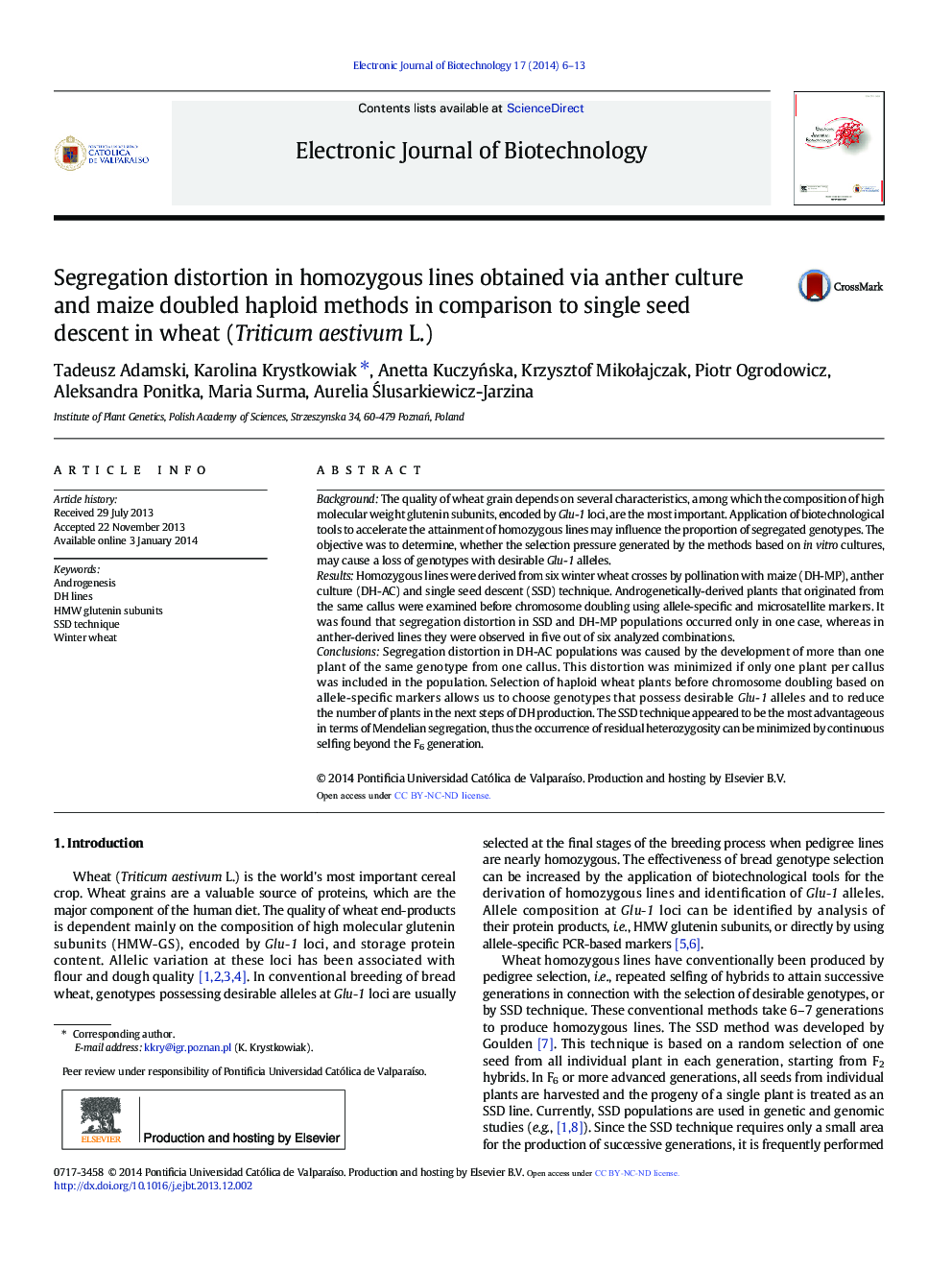| Article ID | Journal | Published Year | Pages | File Type |
|---|---|---|---|---|
| 200832 | Electronic Journal of Biotechnology | 2014 | 8 Pages |
BackgroundThe quality of wheat grain depends on several characteristics, among which the composition of high molecular weight glutenin subunits, encoded by Glu-1 loci, are the most important. Application of biotechnological tools to accelerate the attainment of homozygous lines may influence the proportion of segregated genotypes. The objective was to determine, whether the selection pressure generated by the methods based on in vitro cultures, may cause a loss of genotypes with desirable Glu-1 alleles.ResultsHomozygous lines were derived from six winter wheat crosses by pollination with maize (DH-MP), anther culture (DH-AC) and single seed descent (SSD) technique. Androgenetically-derived plants that originated from the same callus were examined before chromosome doubling using allele-specific and microsatellite markers. It was found that segregation distortion in SSD and DH-MP populations occurred only in one case, whereas in anther-derived lines they were observed in five out of six analyzed combinations.ConclusionsSegregation distortion in DH-AC populations was caused by the development of more than one plant of the same genotype from one callus. This distortion was minimized if only one plant per callus was included in the population. Selection of haploid wheat plants before chromosome doubling based on allele-specific markers allows us to choose genotypes that possess desirable Glu-1 alleles and to reduce the number of plants in the next steps of DH production. The SSD technique appeared to be the most advantageous in terms of Mendelian segregation, thus the occurrence of residual heterozygosity can be minimized by continuous selfing beyond the F6 generation.
